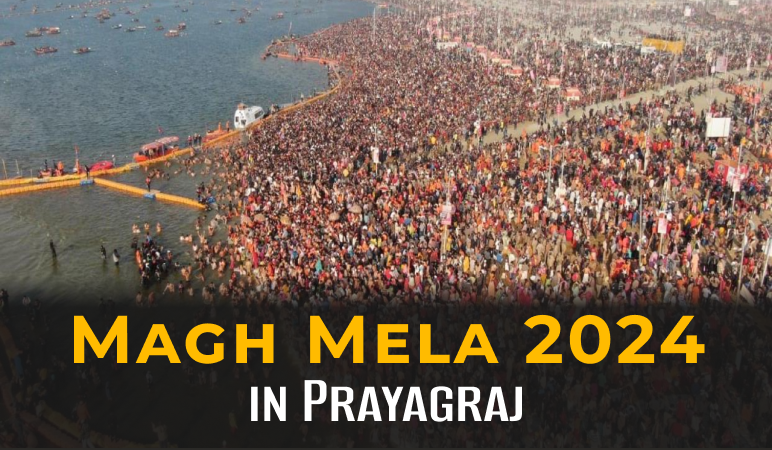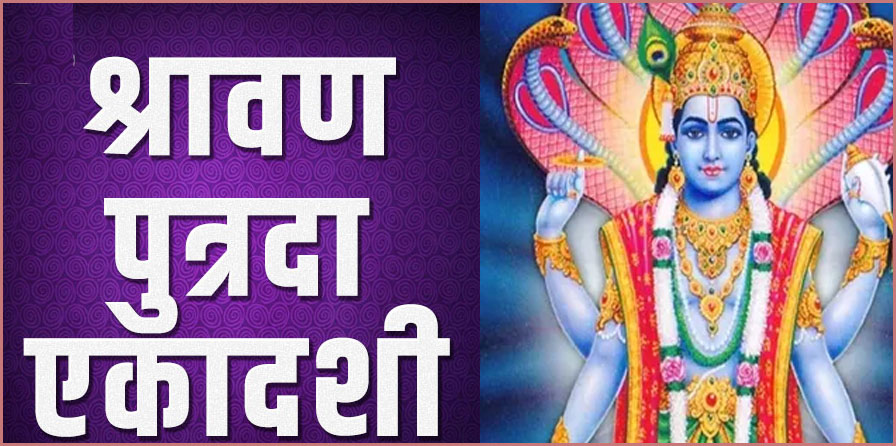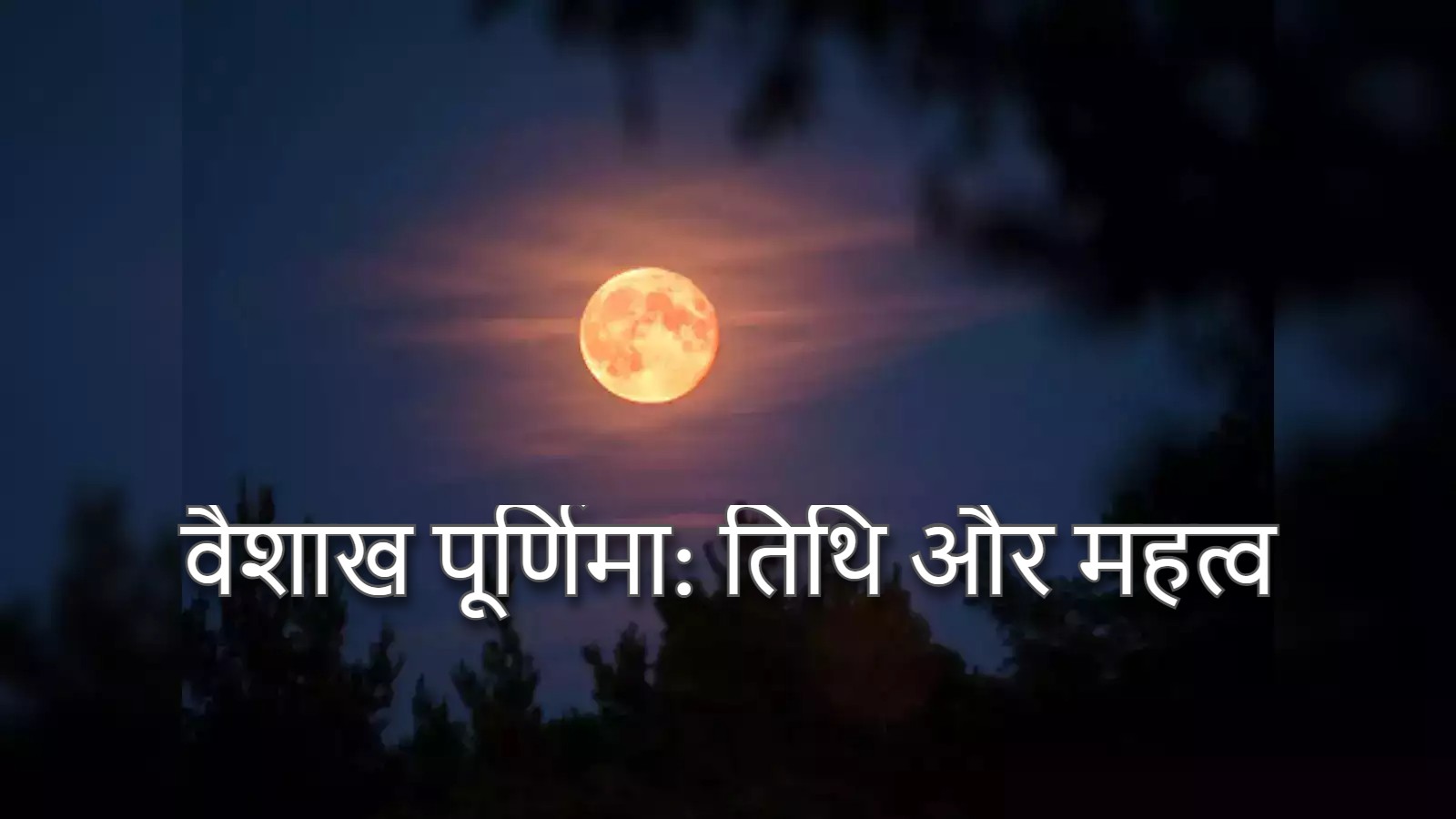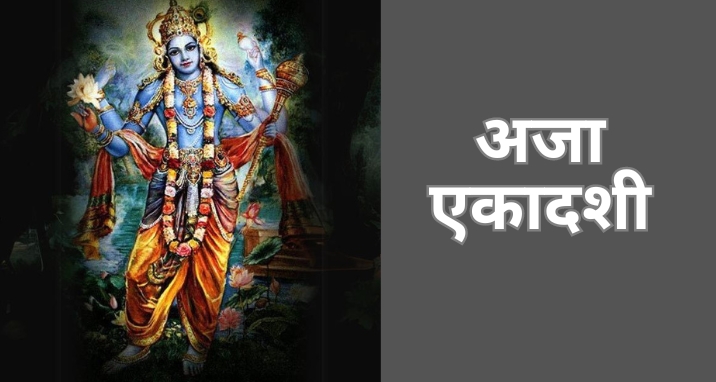Magh Mela 2024 in Prayagraj: Dates, Significance and History!

India is a land of fairs and festivals. The largest number of fairs, especially religious fairs, in the world, are being organised in India. And when we speak of fairs in India, the first and probably the most significant ones to come to mind are Kumbh Melas. It is a unique event of celebration and spiritual significance. People, not only from India but from all over the world, come to attend these fairs.
The timing of Kumbh Melas is determined by the positions of the Sun, Moon, and Jupiter. In Prayagraj, the Kumbh Mela occurs in the month of Magha when Jupiter is in Aries or Taurus and both the Sun and Moon are in Capricorn. Haridwar‘s Kumbh Mela is celebrated in March-April (in the Hindu month of Chaitra), when Jupiter is in Aquarius and the Sun is in Aries. The Ujjain’s Kumbh Mela takes place in Vaishakh or April-May when all three planets are in Libra, or when Jupiter is in Leo and the Sun is in Aries. The Nashik Kumbh Mela occurs in the Hindu month of Bhadrapada, around August-September, with Jupiter and the Sun in Leo. However, the Kumbh Mela is held after a gap of 12 years.
The Magh Mela is referred to as “Mini Kumbh” as it takes place every year. It is organised in Prayagraj. Let us tell you about the important dates of Magh Mela 2024.
Important Dates for Magh Mela 2024
In 2024, the month of Magh begins on January 15 or Makar Sankranti. It will conclude on March 8, on the day of Mahashivratri. This time, it is longer by 10 days. Important days for Magh Mela 2024 are as follows:
-
January 15 – Makar Sankranti
-
January 25 – Paush Purnima
-
February 9 – Mauni Amavasya
-
February 14 – Basant Panchami
-
February 24 – Maghi Poornima
-
March 8 – Maha Shivaratri
To know what activities you can perform on these days and to get immense benefits, you can speak to pundits and astrologers at NamoAstro.
The History Behind Magh Mela
During the Amrit Manthan, between the gods and demons, a few drops fell. Bhagwan Vishnu caused four drops of Amrit to fall at four places on Earth – Haridwar, Prayagraj, Ujjain, and Trimbak-Nashik. These places are sacred, and the Amrit is said to have transformed the waters of these rivers into the elixir of immortality. These locations are considered highly auspicious, and the Kumbh Mela is held there.
The Prayagraj Kumbh holds greater importance compared to other Kumbh Melas. It is believed that before the creation of the world, Bhagwan Brahma performed the Ashwamedha Yajna (horse sacrifice) here. The Brahmeshwar Temple and the Dashwamedh Ghat serve as symbols of this ancient ritual. Due to its connection with this Yajna, the Kumbh Mela holds special significance.
It is considered the world’s largest religious gathering with a common goal. Devotees engage in important activities like taking a dip in the sacred rivers to cleanse themselves of sins.
Significance of Magh Mela
Many people believe that bathing in the Sangam River on special days can cleanse them of sins and bring them closer to Moksha, the ultimate goal in Hinduism. The main purpose of the holy dip is to break free from the cycle of rebirth and achieve spiritual liberation.
According to Hindu beliefs, taking a bath three times during Magh Mela brings virtue equal to that of Ashwamedha Yagya.
Worshipping Bhagwan Vishnu and Surya Dev on these days helps devotees fulfil their wishes.
Rituals to be Followed on Magh Mela
The rituals to be observed during the Magh Mela are as follows:
-
Worship Bhagwan Vishnu throughout the month of Magh.
-
Recite Vishnu Sahasranama and Madhurashtak throughout the month of Magh.
-
This month, one should stay away from vengeful eating habits like non-vegetarian food and alcohol.
-
During the 45-day Magh Mela, devotees take holy baths on specific auspicious days, including Poornima, Makar Sankranti, Maghi Amavasya, Basant Panchami, and Mahashivratri.
-
In the month of Magh, it is beneficial for a person to follow the complete rule of celibacy.
-
Worshipping Tulsi and reciting Geeta this month is said to be very auspicious.
-
These festivals involve a ritual dip in the waters and also include community activities such as fairs, education, religious discourses, charity, communal meals, and entertainment.
-
As part of the Kalpavas rituals, worshippers perform Yagya and, after completing 12 Kalpavas, engage in Shayya Daan, donating their beds and other items to seek blessings from Gods.
-
Devotees also practice Ann Daan, feeding saints, the destitute, and the needy, along with donating grains and sesame seeds.
-
Saints and sages at the Magh Mela perform yagya-havan and other religious rituals.
-
Along the riverbanks, thousands offer prayers and Arghya to the rising sun, with devotees worshipping the Sun God after bathing in the Ganga.
Main Attractions at the Annual Magh Mela
The Magh Mela attracts sadhus or saints, from various places. These sadhus are a major highlight of the fair, and people come to see and listen to them for spiritual guidance. There are different types of sadhus with unique practises
Nagas
Naga are known for being naked and covering their bodies with ashes. Nagas can endure extreme temperatures without clothing. They often engage in trance-like dances, speak about spiritual wisdom, and are a significant attraction at the fair.
Urdhwavahurs
These saints achieved spiritual emaciation through practises like standing on one leg for extended periods.
Parivajakas
These saints have taken a vow of lifelong silence and communicate through mysterious, gleaming eyes.
Shirshasinse
Saints in this category always remain standing, sleep with their heads on a pole, and meditate while upside down.
Kalpvasis
These saints stay by the riverbanks, taking multiple holy dips daily and dedicating their time to meditation and rituals. They form a unique and devout presence during the Kumbh Mela.
Magh Mela Celebrations in Other States
In southern India, there’s a notable festival at the Mahamaham tank in Kumbakonam, while in the east, celebrations take place at Ganga Sagar Island in West Bengal and Konark, Puri.
The Ganga Sagar Mela occurs annually during Makar Sankranti in West Bengal. This year, in 2024, it takes place from January 14th to January 15th. The preparations start on January 14th and conclude on January 15th. Pilgrims participate in the pilgrimage by taking a dip in the sacred waters of the Ganga in the morning while also worshipping Lord Surya, the Sun God.
In Sikhism, Guru Amar Das recognised three festivals, including Magha Mela, along with Diwali and Vaisakhi. He encouraged Sikhs to unite for community celebrations, also known as Maghi, which now commemorate the sacrifice of forty martyrs during a Muslim-Sikh war in 1705 CE, during the time of Guru Gobind Singh. The largest Maghi gathering takes place in Muktsar. Guru Amar Das established Goindwal Sahib as a Sikh pilgrimage site, where he built a stepped water tank, called a baoli, for ritual bathing.
Frequently Asked Questions
Q: What is Kumbh and Ardh Kumbh?
A: Kumbh Mela occurs every 12 years and Ardh Kumbh occurs every six years when, according to Hindu astrology, Jupiter is in Aries or Taurus and the Sun and Moon are in Capricorn during the Hindu month of Magh in winter. However, in Prayagraj, Magh Mela takes place every year. This year, in 2024, it will take place from January 14th to March 8th, attracting millions of people to witness the sacred bathing and experience the unique spiritual atmosphere of the fair.









